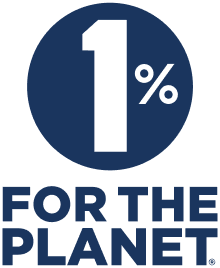Updated: November 28, 2024
Australia has long enjoyed a pioneering coffee culture, with specialty cafes in Sydney and Melbourne at the forefront of this movement. However, this culture is at risk due to the chronic underpricing of Australian specialty coffee compared to other global cities and countries. While lower prices may initially seem like great value for consumers, they pose a serious threat to the survival of Australian Specialty cafes and the overall quality of the coffee experience. In this article, I delve into the reasons behind the coffee price discrepancy and why it is essential to correct this trend to sustain the thriving coffee culture.
Australian Specialty Coffee vs. Global Cities
The following table provides a summary of representative pricing from various global cities for a small flat white without any additions or modifications.
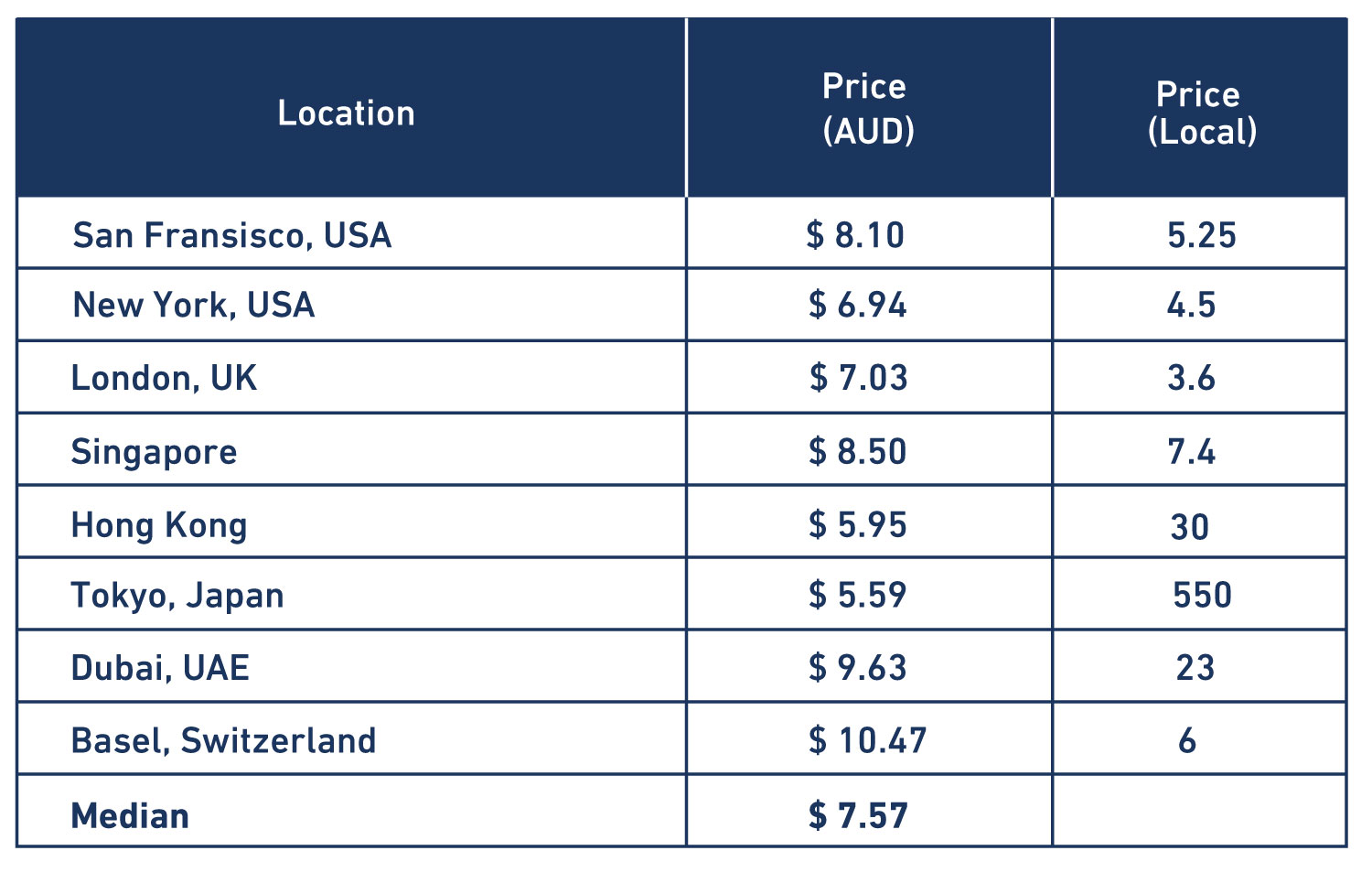
The above table represents prices based on the AUD exchange rate as of 28th Nov 2024.
Most specialty cafes in Australia are still around $5.00 with many lower than that price point. Some Melbourne and other cafes might be closer to $5.50, but that’s few and far between. This significant price disparity raises concerns about the sustainability of Australian Specialty cafes, as they will struggle to maintain quality amidst such low-profit margins. We believe that most specialty cafes should charge $5.50 for a small flat white with a medium-term pricing of $6.00.
The Survival of Australian Specialty Cafes
Specialty coffee is a delicate balance of quality, passion, and sustainable pricing (you can read more about specialty coffee here). It needs skilled craftspeople, high-quality coffee, and specific (and expensive) equipment, and much much more. The costs that Australian cafes face, especially those in Sydney and Melbourne, are similar if not more than other global cities (read more about cafe costs here). While lower prices may attract a larger volume of customers initially, they pose significant challenges to the long-term survival of specialty cafes. To maintain their high standards, these cafes must invest in premium beans, skilled baristas, and top-notch equipment – expenses that cannot be ignored. The current pricing model will be detrimental, as it will force cafes to compromise on the overall coffee experience.
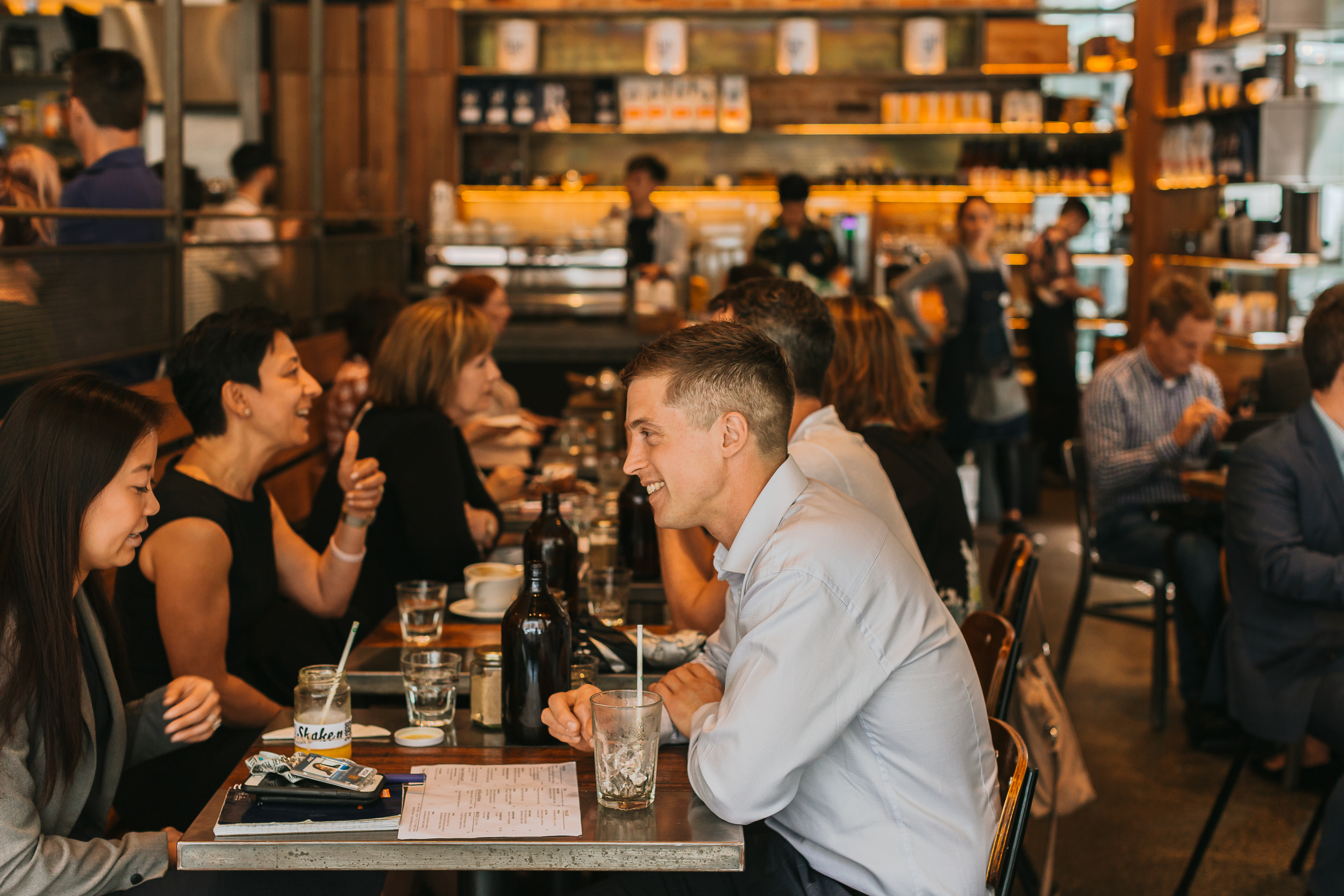
When specialty is no longer special
I have often asked myself how did we as an industry end up here? By here I mean an undesirable place where specialty coffee in Australia is priced and perceived as no different than all other coffee and is significantly below prices charged in global cities and countries.
The first reason is that many years ago specialty coffee was priced and marketed as the premium beverage that it is. Specialty coffee quickly became a consumer favourite and a trend all across Australia. This led to many new participants entering the market and everyone calling themselves “specialty”. Some of these participants were clearly not using specialty-grade beans or equipment or providing a premium experience. Sadly while “Specialty” is easily defined and measured at a coffee bean level, there is little to no regulation stopping others from using it. This has led the customers to view all coffee – specialty or otherwise– as similar and the differentiation is less obvious. This is one reason we have a love-hate relationship with the label “specialty”. As we see ourselves as doing a lot more than just specialty coffee; a premium experience that goes beyond specialty with a cornerstone of innovation, impact, and sustainability. This is the reason that we are one of a small group of companies in the world that have the trifecta of being B Corp, Carbon Neutral certified organisation, and 1% for the Planet members. That being said, we are still passionate about specialty coffee and deeply invested in seeing it thrive in the future.
The second reason is that this is the unintended consequence of a well-intentioned vision to make specialty coffee more accessible. We have broadly achieved this vision as an industry and as a company. We love specialty coffee and what it stands for and want to share it with as many people as possible. However, this has led to an undesirable consequence: specialty coffee is no longer special in the eyes of many consumers. Even though it’s high quality and traceable, it tastes better, it’s made on exquisite equipment by skilled craftspeople, yet it has lost its differentiation. It is now priced and marketed similarly to all other coffee.
These two reasons amongst others can help explain why Australian specialty coffee prices have fallen behind our global peers.
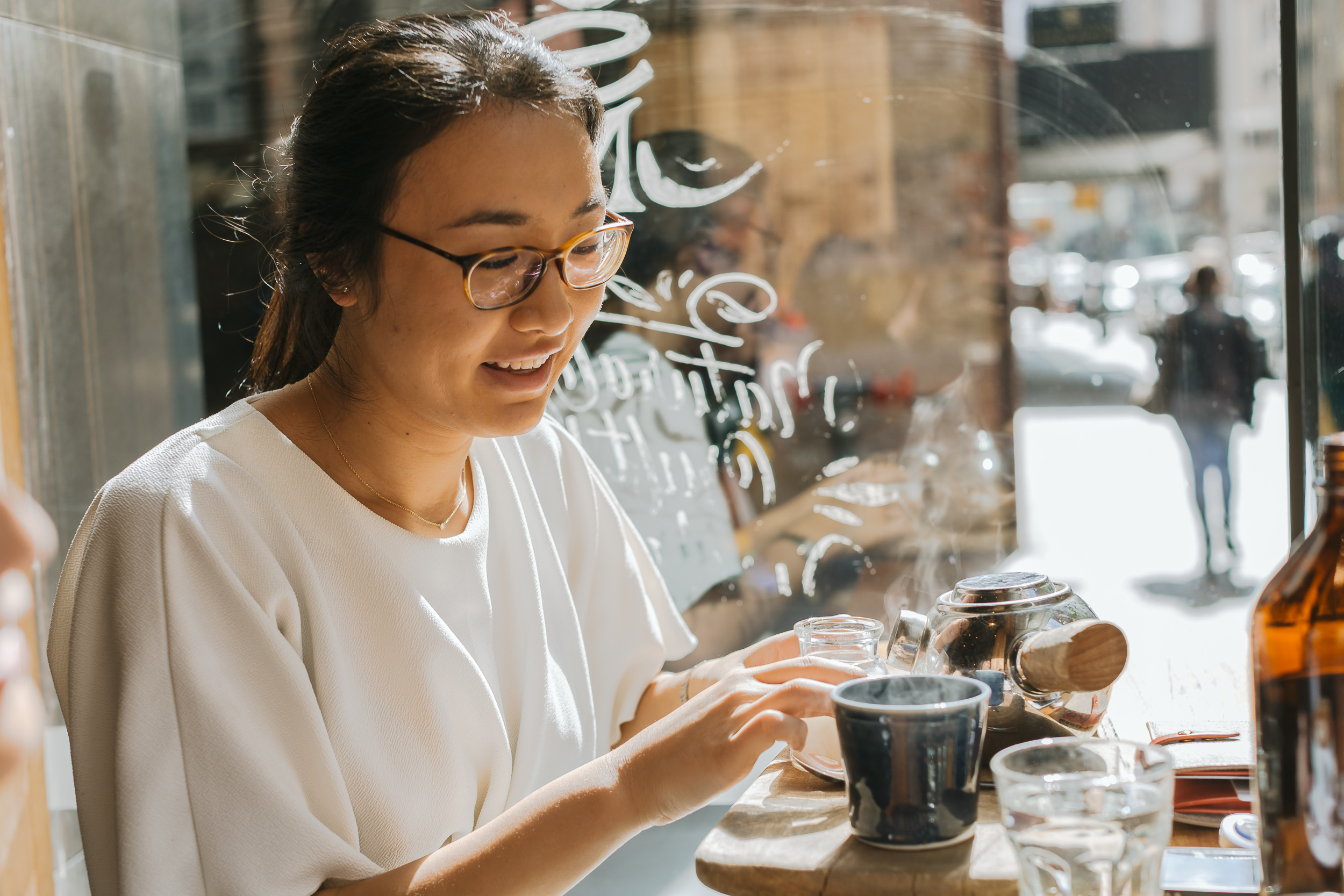
Behaviour vs Affordability
While affordability is a real issue facing many consumers and businesses alike, this most likely is not the main issue. For example, many consumers are happy to pay a lot more for bubble tea, juices, and even premium canned and bottled drinks. Specialty coffee is arguably a more premium craft beverage requiring a greater level of skill and equipment than many of these beverages and yet it sometimes cannot command the same premium. Many people who can afford specialty coffee and value the craft are willing to pay this premium once the differentiation is clear, in our experience. Of course, the onus is on us to deliver and communicate a premium experience and product.
The Way Forward
The good news is that we can only go forward from here. Inflationary pressures have pushed specialty cafes to make a decision: charge a fair and feasible price for the beverages they are producing or lower the quality of their offering.
The latter would be a tragedy for both the industry and the Aussie consumers. The responsibility lies with the industry and cafes first. We have inadvertently created a perception of homogeneity through pricing and communication in an effort to make specialty coffee accessible. We must now start to differentiate once again both in price and communication. Specialty coffee is different than just coffee and it should be priced and marketed as such.
We have to make our pitch to our amazing customers. The perception that all coffee is the same has to change. We have to communicate the difference of specialty coffee and ask for a share of their hard-earned wallet and their continued support. In our experience, many of our wonderful customers value specialty coffee and the experience and will continue to support it if they can. At a minimum, our customers will know the difference between specialty coffee and just coffee and be able to make an educated choice.
This is something that needs immediate and considered action. Not changing this trend means that our consumers will only have the choice of just coffee and that would be a tragedy.
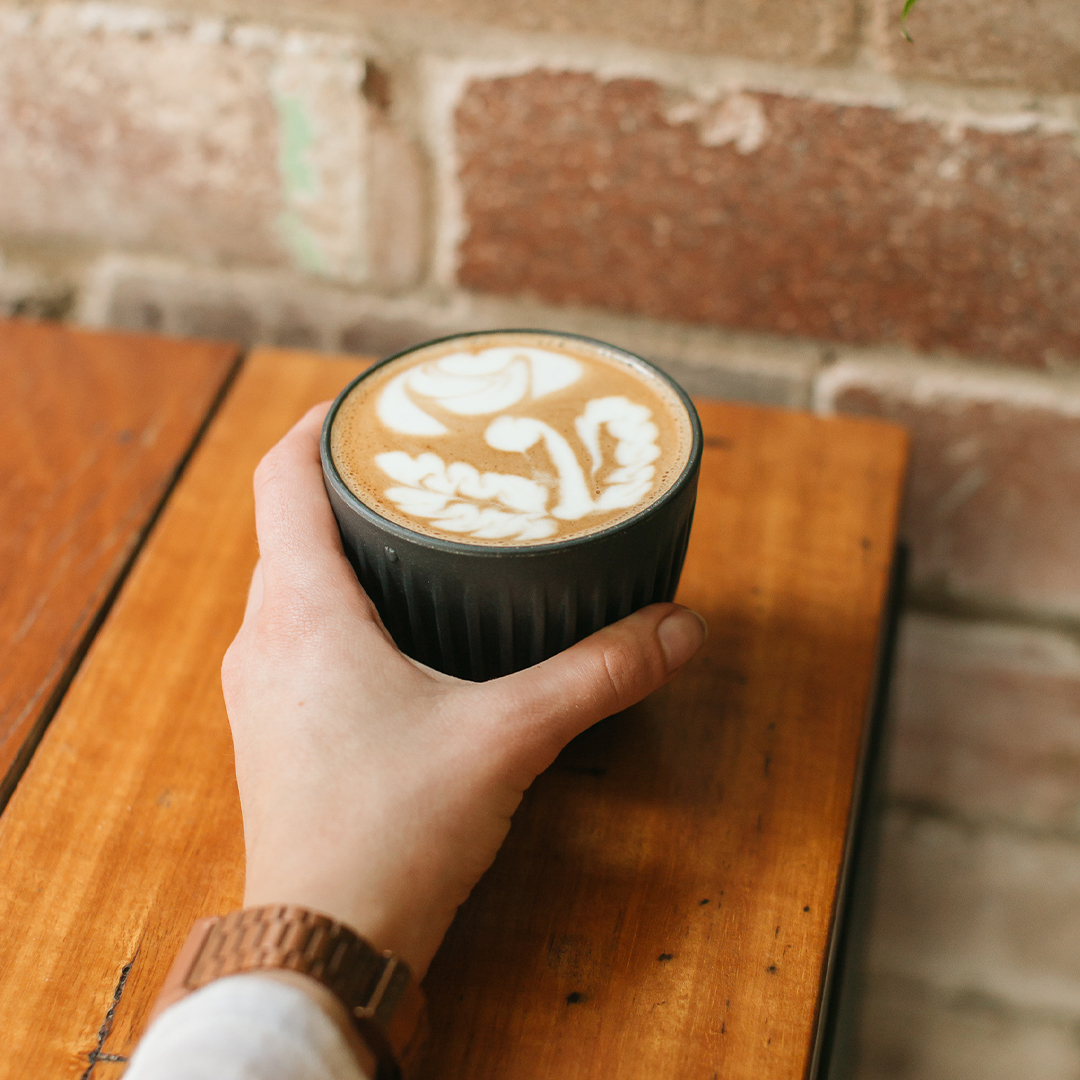
Conclusion
The issue of low Australian specialty coffee prices compared to global averages is not just about affordability but also about preserving the art and passion that goes into every cup. To ensure the survival of specialty cafes and maintain the high standards of coffee culture, the industry must find a delicate balance between pricing and accessibility. Moreover, the contrast in consumer behaviour towards coffee and other beverages illustrates the need for greater awareness and appreciation for the artistry of specialty coffee. By elevating the perception of coffee and educating consumers about its true value, we can secure the future of the Australian coffee scene while enabling customers to continue enjoying great coffee experiences for years to come.
You can read more about the cost of Specialty Coffee here.
Keen to know more about what goes into the cost of a cafe coffee, check out our piece, What goes into the cost of a cafe.
Check out our full blog series on all topics covering coffee prices.



